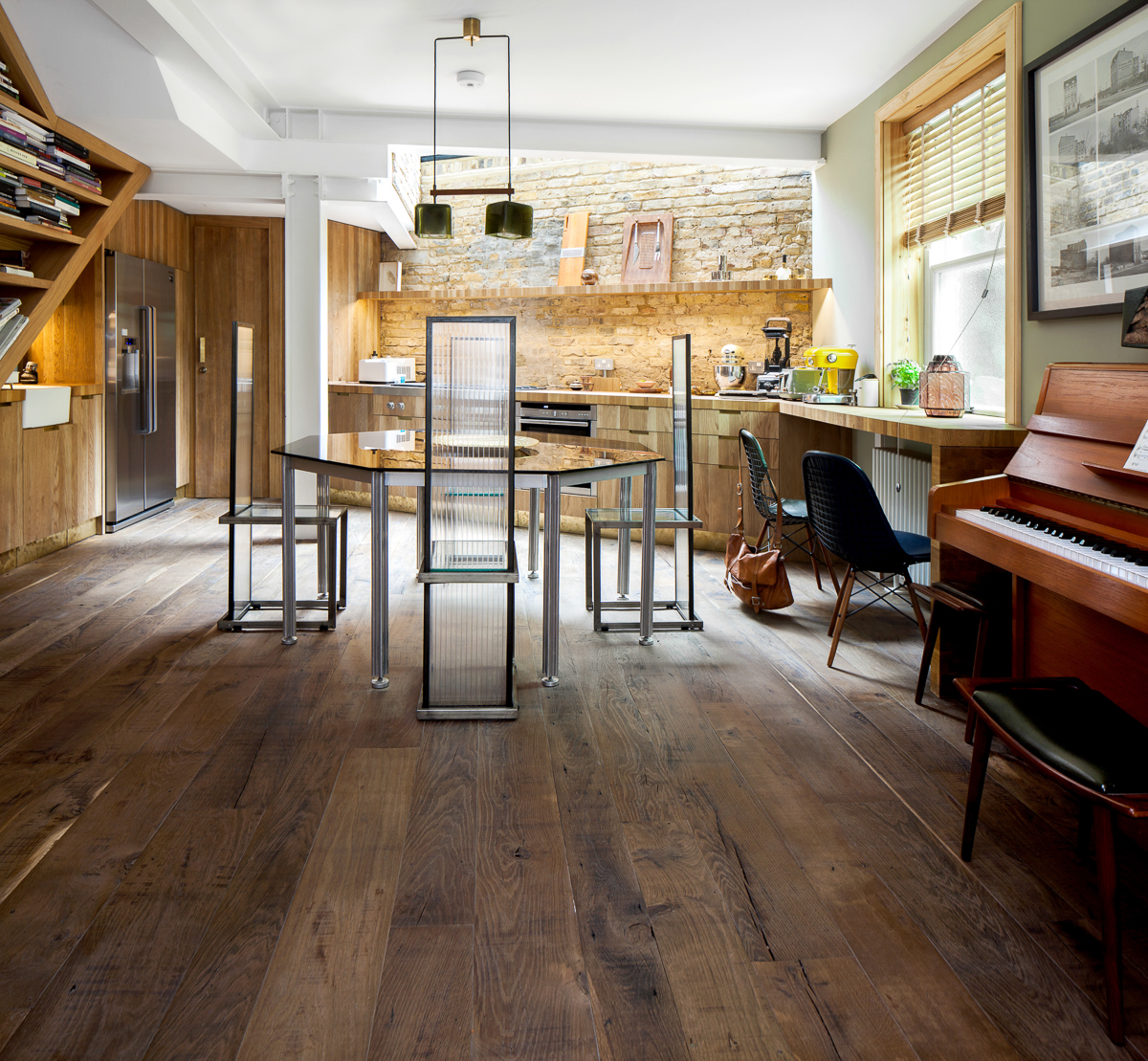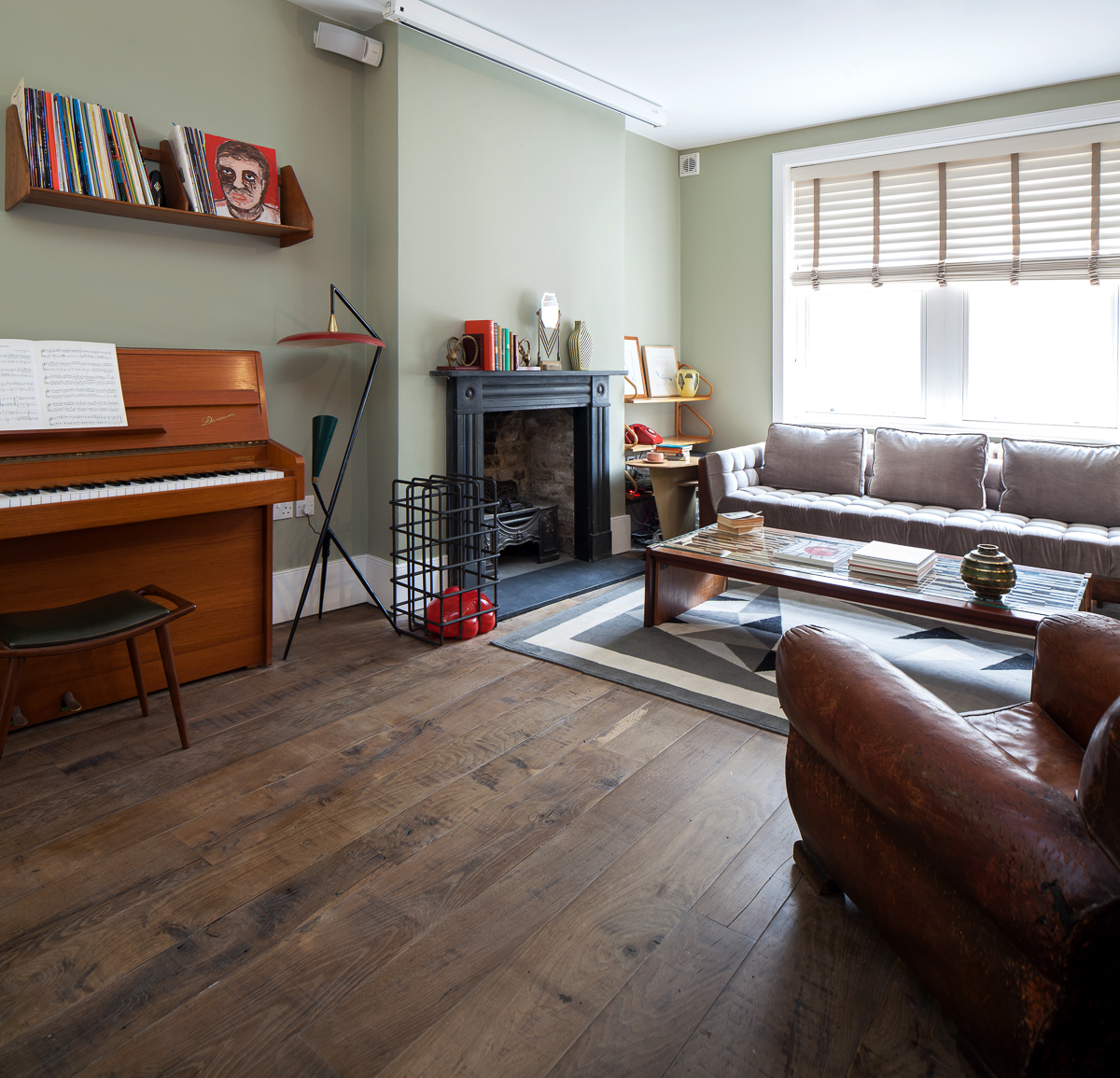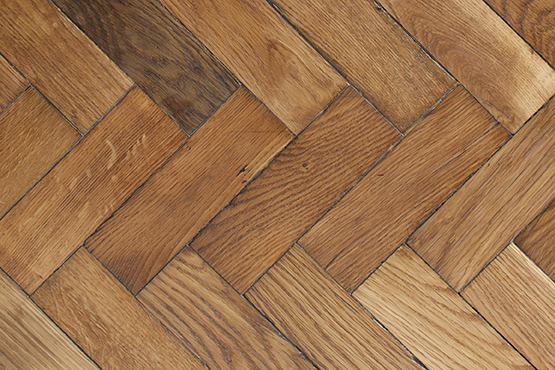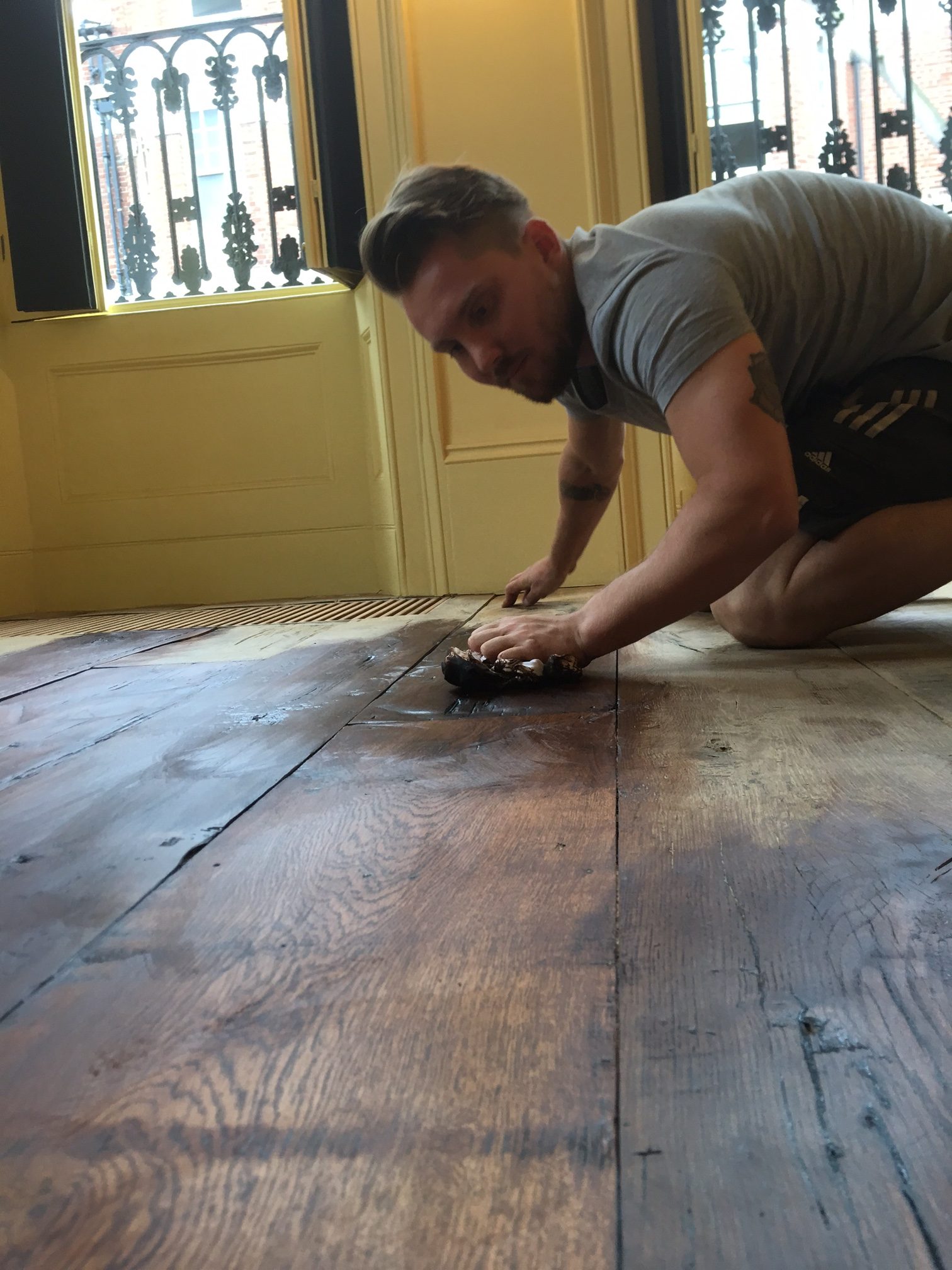
Within the last decade, the quest for character-filled antique wood, also known as “reclaimed wood” or “recycled wood” has evolved into a full-fledged industry.
Old barns, warehouses, wine casts, army barracks, and even retired ships are providing companies with old-growth wood. After a careful selection, each floorboard is cleaned and calibrated.
There is a uniquely weathered beauty about reclaimed wood that transforms into one-of-a-kind wood flooring. No doubt, reclaimed flooring makes a long-lasting impression with its rich grain patterns, deep colours, and distinct patinas. Regardless of age, it possesses distinctive characteristics in each board, making it the best authentic choice for many homes and commercial spaces.
Here are some pieces of advice for finding the perfect type of reclaimed wood flooring for your next project.
1. Make sure the wood is dry
Wood that is soggy or degrading tends to be extremely difficult to work with and will not last long in whatever application you have in mind. Before you purchase any type of reclaimed wood, make sure it is completely dry as excess moisture not only allows insects to thrive but also leads to warping in wooden floors.
2. Make sure the wood is stable
Because for the most part reclaimed wood comes from trees at least 200 years old, the grain is tighter, the wood more durable and stronger. These trees were ‘slow grown’, unlike today in our globally managed forests where trees are generally grown a lot faster and so their growth rings are farther apart. Reclaimed wood flooring is stronger and will outlast (most of) its modern counterparts because older wood is less likely to split. The wood has been exposed to variations in temperature for so long that it’s already done all the expanding and contracting it will ever do. And on the Janka scale of hardness, it is stronger by up to 40 points compared to newly harvested timber.
Beware of any soft spots, rot or mould patches which could possibly indicate structural weakness. So too sawdust, which might indicate the presence of termites or other wood-eating insects. In general, if the outside looks like it’s structurally sound, the inside will be too — and if it shows signs of rot, the wood should be discarded.
3. Keep aesthetics in mind
Speaking of the history of your flooring, when you opt for reclaimed wood you garner with a past. The end result has to look great and complement the desired style for a project. For this to become a reality, it’s important to ask the right questions up front to ensure your selection is one that maintains a level of intrigue 5 or 10 years later.
Reclaimed wood enhances any interior design concept; and before you commit to a type of flooring, have a vision of how you want your floors to integrate with your design scheme and colour palette. Always start with the end in mind. The right selection must be durable to withstand the intended occupant usage and it must be able to meet required cleaning standards.
Understanding how a space will be used, how much traffic is expected, how often the floor is cleaned, and the required cleaning processes will guard against a flooring selection that will fail in short order.
4. Purchase from trustworthy distributors
Just as you would choose experts to handle various tasks in your home or workplace, you should also understand that there’s always an element of risk that comes with doing business with people whose qualifications and expertise you can’t verify. Old wood doesn’t always mean good wood, so know where the wood originates from before any purchase.
If you care about buying the best-reclaimed wood products, you’re going to have a greater guarantee of quality when working with a company that specialises in recycling and upcycling wood. Make sure to do thorough research on the process used to dry the wood, what it entails and how the distributor ensures that the moisture content is consistent.
Have a look at a wide selection of material for a larger vision of the floor — suppliers who care about their products and customer satisfaction painstakingly choose reclaimed wood that has a lot of life in it, then process it to make sure that the grades are consistent, the wood is dry and free of nails, staples and other debris.
5. Do you know the source of the wood?
There are various grades of reclaimed wood, all from different time periods and from different backgrounds. It is important to consider wood infestation, chemical contamination, wood durability when specifying reclaimed wood for a project. It is also worth considering the quantity of timber available versus the expected delivery date for the project. Unless reliable supplies are established for a particular reclaimed wood floor, where the grade and specifications have been carefully considered it is likely that every batch of wood will be completely different. Samples approved in month 1, ordered in month 4 and then delivered in month 6 may not all be from the same batch which may cause problems for the end user.
With regards to the age of the timber, there is a big difference between reclaimed timbers that are 1 year old, 10 years old, 100 years old or over 300 years old. It has been known that re-sellers of reclaimed timbers are unable to offer such specification details such as the age of the wood and the area it was reclaimed from, this again can lead to confusion when specifying and comparing patina variations.
6. Tonal variation
The strongest feature in reclaimed wood is the tonal variation. We feel this should be embraced rather than combated. Depending what you choose to finish the floor with (hard wax oil, traditional wax or lacquer) you will be able to even out the tone of the floor but this will not be as uniform as pre-finished new wood. If you are concerned about achieving the right colour when using reclaimed wood you should speak to your fitter about colouring options.
7. Don’t be afraid to ask
You shouldn’t be afraid to ask questions about anything you don’t understand. The more knowledge you possess about a product the more informed decision you can make about its application and if it is right for the job. Reclaimed wood is never a constant, just as it is a natural product but every piece is also unique and will have developed its own patina depending on where and how it was previously utilised.
8. The installer is the superstar
The final grading and presentation of the floor become apparent in the final stages of the installation.
It is highly advisable to work with fully certified and experienced fitters that feel comfortable working with reclaimed wood.
It is also advisable to follow the installation instructions from the supplier.
Working with insured fitters is a great way to add some extra piece of mind to your project.
Conclusion
Flooring is a critical aspect of any built environment, so it’s important that it unifies the design and creates an unforgettable experience. No matter what type of project you’re working on, there’s a great reclaimed wood flooring option ready to emulate lots of character and personality into your space.
Remember when you start your new project with reclaimed wood you need to keep in mind;
1. Is the reclaimed wood dry?
2. Is it stable enough to be reused as flooring?
3. Is this reclaimed wood right for my room, based on; colour, foot-traffic vs. wear, cleaning vs. wear?
4. Does this supplier work with reclaimed flooring regularly and have good testimonials? Can they answer my questions?
5. Does the supplier have enough stock to complete this project from one batch?
6. Can the fitter help me achieve a cohesive look with the variation in tones from the reclaimed planks?
7. Do I have questions about a specific product?
8. Do I have a fully certified fitter?














